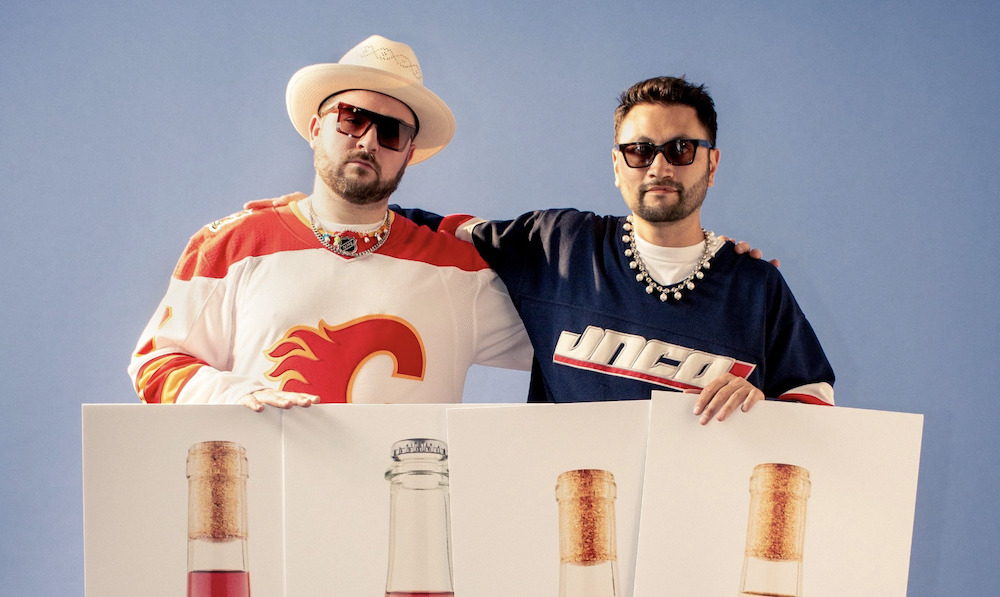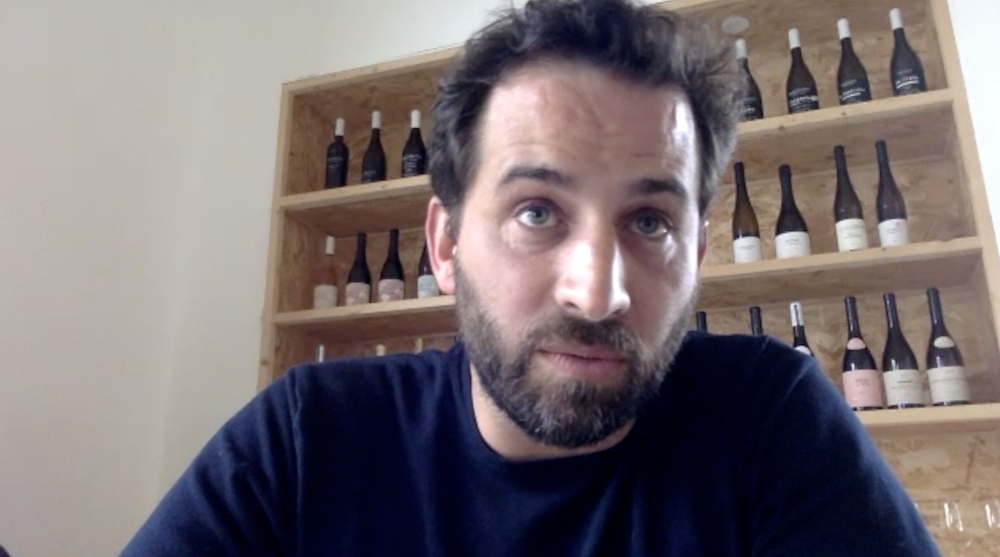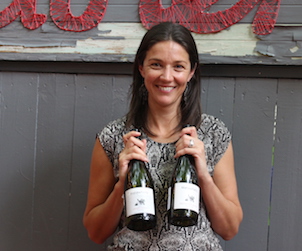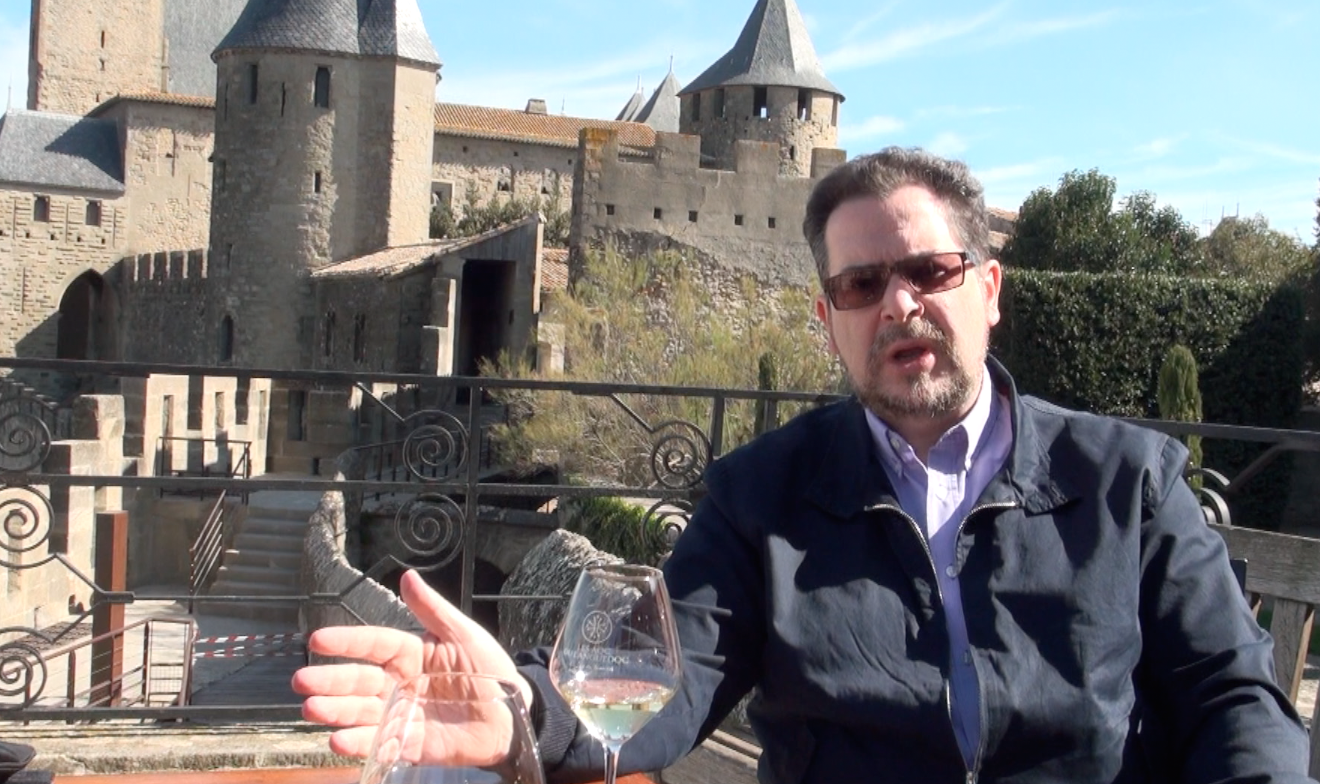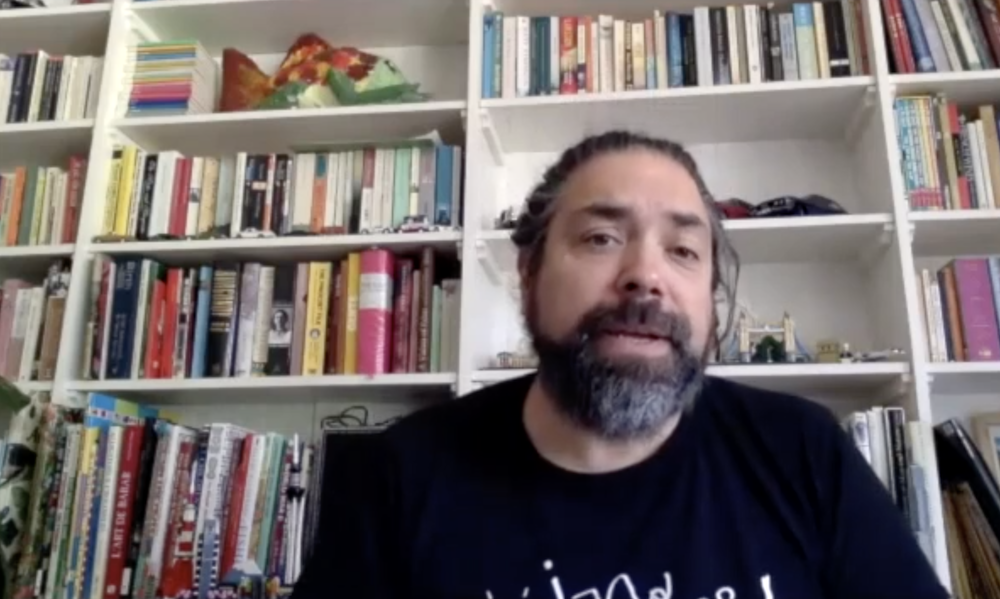What happens when a DJ and a winemaker walk into a wine shop?
They ditch their day jobs and start a natural wine company.
That’s not quite the complete origin story for Wonderwerk House of Fermentation. Still, it’s a core moment in how the duo behind Wonderwerk got started. Andrew Lardy and Issamu Kamide are known for their quirky labels and crushable blends, often co-ferments of California heritage vines and fresh botanicals. Wonderwerk’s wines carry a sheen of Gen-Z “cool” that may often obscure the attention to detail and intentionality that go into their work.
I recently sat down with Andrew and Issamu to talk about how Wonderwerk came to be and how they see themselves fitting into the broader sphere of natural wine.
Our conversation has been gently edited for length and clarity.
You can keep up with them at wondwerkla.com and find their wines poured locally across the GTA, including at Good Cheese, Bossanova, Manita, and Green Apple Bottle Shop, as well as by the case through Drink Better.
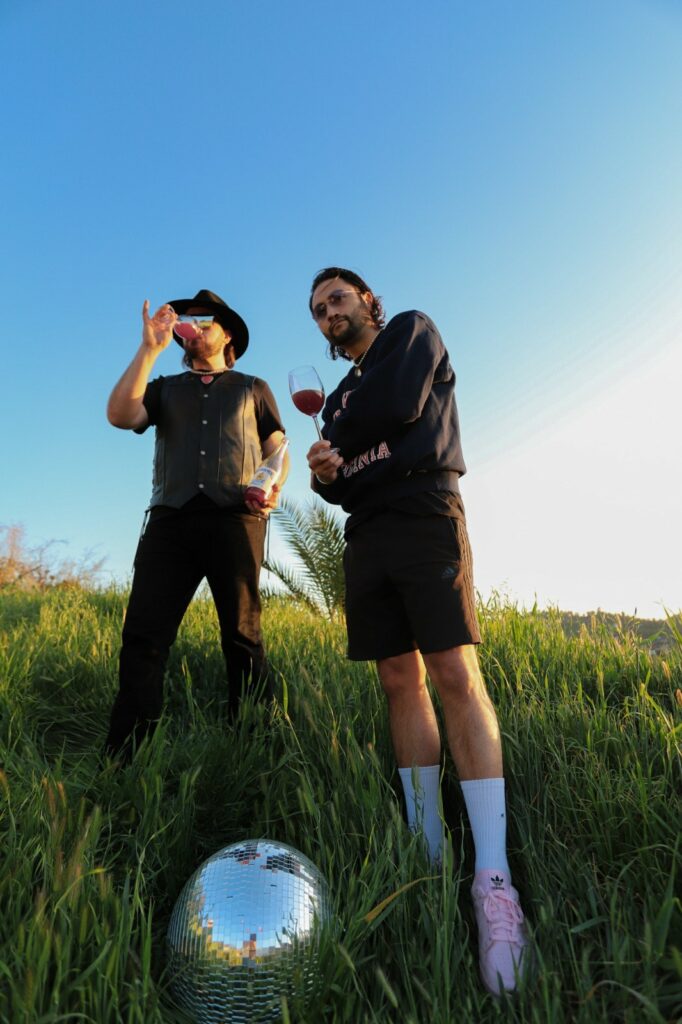
Wonderwerk Co-Founders Andrew Lardy (left) and Issamu Kamide (right)
Good Food Revolution: How did you guys get connected?
Issamu Kamide: We went to the same high school, but I was a year ahead of him. We became better friends in college and stayed connected after we graduated. After college, I worked in big corporate food and beverage: Nestle, Ferrero, and Nutella. That’s what brought me to LA. We were the only friends of our friend group on the West Coast, so we’d go to parties and raves together and drink natural wine. I lived a block away from Silverlake Wine, which at the time was the most prominent natural wine shop in the city.
GFR: How did you guys start out making wine?
Andrew Lardy: For Wonderwerk, we actually started with preparing to make Korean rice wine, Makgeolli, and to hopefully distill that into Soju as well.
IK: When we originally started out, we had a third partner who was Korean, so that’s part of why we started with Rice Wine. We liked the idea of Makgeolli because it’s the healthiest alcohol. It’s highly probiotic and super high in fibre. We tried to pursue that as a health-conscious concept, but it’s really hard to make. Then we wanted to make Soju but realized the regulations for producing Soju domestically are tricky. Finally, we came around to just making wine out of grapes. Our first vintage was a Corsican-styled rose, which we called Discovino. We parted ways with our third partner after that first vintage and fully transformed into Wonderwerk.
AL: Meanwhile, I worked for other wineries and picked up a degree in Viticulture and Oenology, making Pinot Noir and Chardonnay.
I spent a lot of time in Santa Barbara working around Santa Rita Hills and Happy Canyon with Deovelet wines and Tyler Winery. After that, I ran a laboratory in a custom crush facility.
I came from a scientific background, more on the analytical and control side of wine. It’s been a fantastic sort of education to learn how to make natural wine by learning how to do it in precisely the opposite way.
GFR: Tell me more about what catalyzed your interest in doing things in a way so contrary to your training.
AL: It was the search for freedom of expression. Issamu was living in LA and invited me to wine tastings down there. I was introduced to wines that were more experimental vs. the constant obsession with recreating Burgundy in California, which blankets St. Rita Hills and Santa Barbara. So, the approach to natural wines seemed crazy, but also an opportunity to do something new. And I’m a constant tinkerer, always looking to do something different. If everyone is doing the same thing as me, I need a new thing.
While we were working towards making rice wine and Soju, I took a job as a distiller in Los Angeles, which is how I picked up this skill set that is super complementary to winemaking. It’s why we call ourselves Wonderwerk House of Fermentation. We can make any style of alcohol because of all the different experiences we have shared between our two careers. There’s a lot more cooking in our cellar than just grape fermentation.
GFR: How does distillation fits into your vision?
AL: It’s by happenstance that I became a distiller, specifically making Gin. I was working with a wide range of botanicals; fruits, spices and flowers. This influences how we make our wines, so you will see that some of our wines have added fruits and botanicals. We have one with Hibiscus and Ume thrown in. California has so much to offer; it’s a cornucopia of ingredients. It’s really our mission to take advantage of that.
GFR: Where do you guys see yourselves in the generational progression of natural winemakers?
IK: We think we’re part of wave three out of four in California. The first wave would be Tony Cotturi, Littorai, and Steve Matthiason. The second wave would be Donkey and Goat and Martha Stoumen, and then we’re third.
AL: Then after us is a post-pandemic wave that, you know, even though it’s close in time, it’s categorically different than when we started. Now, we really took off in the post-pandemic, so it’s a micro-delineation.
GFR: How do you see the natural wine scene evolving from here?
AL: I think we see coming up behind is a bit of a downsizing, where there has been a proliferation of producers in California, and I think maybe in the future, it will be a bit of a pruning back of successful business models.
IK: And I think that that’s gonna be driven by both consumers and distributors. Where consumers don’t want expensive, flawed wine, and distributors say, “I can’t sell that.”
It’s a catch-22, right? More people are making natural wine, and it’s becoming more popular. Still, you have more flawed wines coming on the market, which turns off the mainstreaming of natural wines.
GFR: What does your involvement in the viticultural side look like? Do you guys have influence on the farming practices of the vineyards you work with?
AL: It starts off when you’re a small customer of a vineyard purchasing grapes that you have very little input – no input, to be honest. It’s then required of you to find vineyards already using the practices you want to encourage. It’s tough to identify vineyards that use organic practices and peel off some fruit because it is obviously in high demand. Thankfully, as we have grown tremendously over the last few years, we’re starting to purchase in larger quantities, approaching the point where we may lease an entire vineyard. Then you have more standing to have that conversation about growing practices.
IK: We foster relationships with growers that are based on transparency. We’re not going to be hardcore dogmatic or tough to deal with if they have an issue because we understand that’s their livelihood as well. I would say agriculture and farming are some of the most opaque aspects of winemaking because a lot of people don’t understand the business of agriculture, especially in a state like California, where agriculture is Big Business.
We’ve had distributors tell us you’ll start hearing more and more questions about regenerative agriculture cause that’s like a buzzword now. Still, these people don’t have any idea what farming is like. As an example, year over year, California has fewer acreage of “certified” organic vineyards. Now that’s ‘certified,’ but you can find plenty of growers or farmers doing the most organic or sustainable processes but don’t have the certification.
I think consumers and who they get that information from – the gatekeepers between the consumer and the product, which are somms, buyers and writers, don’t really understand how the farming part of winemaking actually works. They get enamoured with the images of pastoral life, but that is .000001% of all the acres in California that are used to grow grapes.
GFR: What’s your take on labour sustainability in wine?
IK: We don’t shy away from machine harvesting. If that’s offered to us, sometimes we do take it depending on the type of wine we’re going to make. Also, it means fewer humans out in the field picking. We offered to do our own picking, and people just laughed in our faces. There’s no way you can ever beat the speed of people who do this day in and day out. For roles we hire directly, we pay more than minimum wage, we provide lunch, all this other stuff. We’re not into the game of free labour. People need to be compensated for their work, even if they’re ‘volunteering.’
GFR: Is there something readers should know about your experience in natural wine that I have yet to ask about?
AL: That’s a good question.
IK: We philosophize on where things are going, and our Northstar is to get more people drinking better quality, better made, better-sourced wine. We lead with that, and all other decisions cascade from that. We try to avoid being super dogmatic, to adapt to changing environments, and focus on the ability to scale. There’s a lot of tension in the natural wine world between commercialization or ‘scale is the enemy’ and actively encouraging people to entirely switch from drinking commercial wine to natural wine. How are you supposed to achieve that without scale? That’s a conversation we have a lot with each other and other producers. Suppose the goal is for more people to drink better-sourced, better-quality wine and to have the ability to influence farming in a much more significant fashion. In that case, scale can’t be the enemy. We need to think about producing things that are clean, without flaws, and without overbearing dogma that can inhibit our ability to reach new audiences.
AL: We’re making cleaner, stronger, more well-put-together wines at scale, too. I really think there is a sweet spot in greater scale. That has been unexpected, but it’s definitely there.
GFR: Is that because a certain degree of scale allows access to resources you wouldn’t have when working at smaller volumes?
AL: Ya, you know, more reliable containers, more reliable storage and fermentation vessels. There’s also an incredible pressure of oxidation in the wine when you make it in small volumes; it’s that surface-to-volume ratio, and with scale that depletes and natural processes are more effective.
IK: We made a wine in a 6500-gallon tank, and it was easier to manage and produce than when we were doing it in a 1000L variable capacity tank. This wine previously had mouse pressure when we did it on such a small scale. That wine is so much fresher, loaded with C02. C02 is our best antioxidant, infinitely more powerful than sulphur for preventing oxidation.
We realized this has been easier; we produced more, and it’s cheaper for the end user. That experience sort of unlocked something in our minds about how we should approach things. Scale is really our hero.
GFR: Can you give me a sense of your production volume when you started and when you are now?
AL: 350 cases in our first year, and now we just did about four thousand cases in 2022. We’ve doubled or increased an extra 50% yearly for the last few years. We’ll produce twice as much this year as last year. As I sit here thinking about that, with fruit coming in in about a month, it is a bit intimidating. But again, we’re ready for it. Scale is our hero.
GFR: That’s some serious growth over the last few years. Do you see yourselves levelling off here?
IK: Well, no. We want to continue to produce more wine, but we also have a lot of ideas outside of wine, distilled spirits, and products outside of wine that we want to work on. Overall, our story is one of learning and growth. We started out not really knowing anything about the business side of wine and winemaking. We have survived the pandemic, grown and reached new audiences and made some fantastic wines.
GFR: Thank you for your time. It was a pleasure speaking with you!
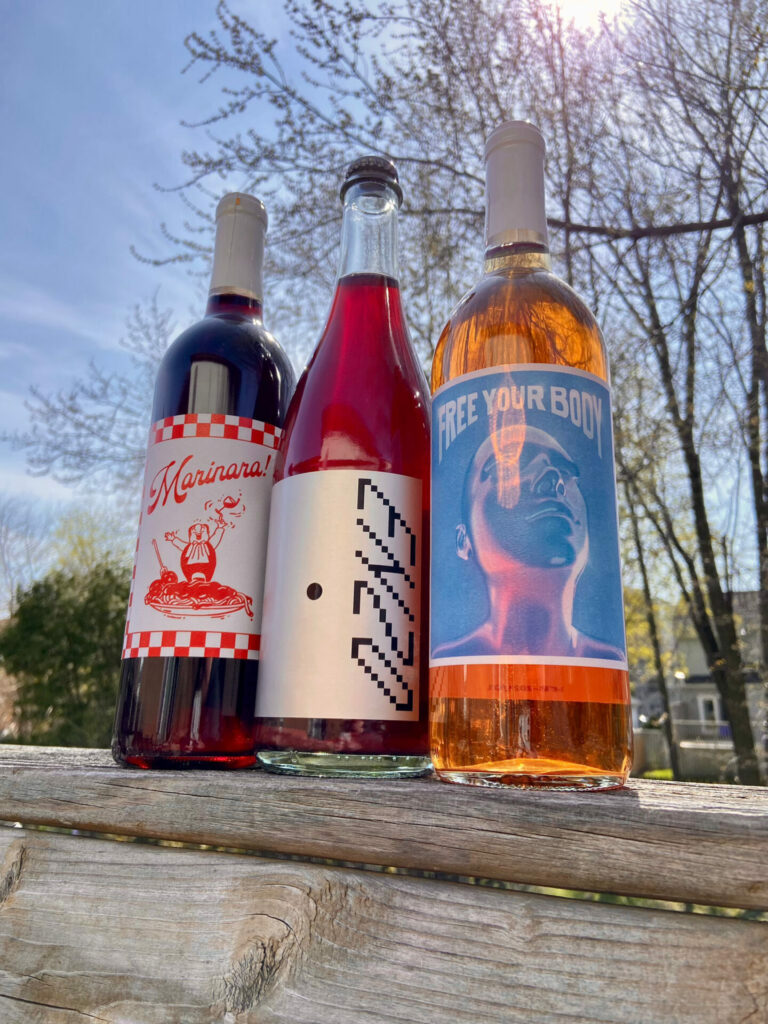
A trio of Wonderwerk’s wines that are available in the GTA.
Wonderwerk’s wines are available in Ontario through Drink Better.
Drink Better are a Good Food Fighter (read: invited sponsor).
Please support the businesses and organizations that support Good Food Revolution and keep it ad-free.

